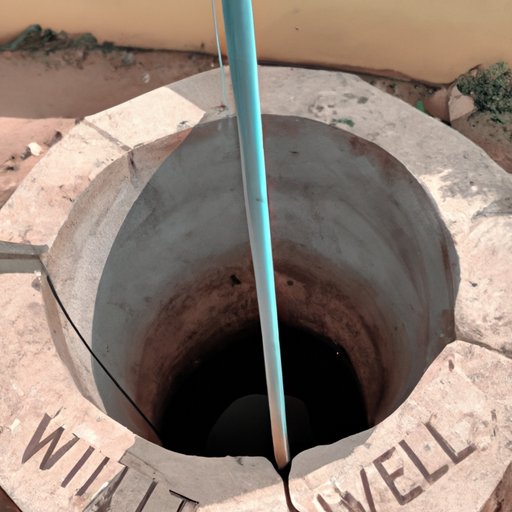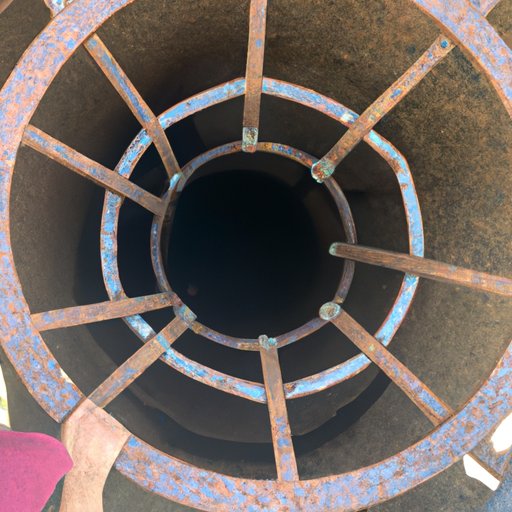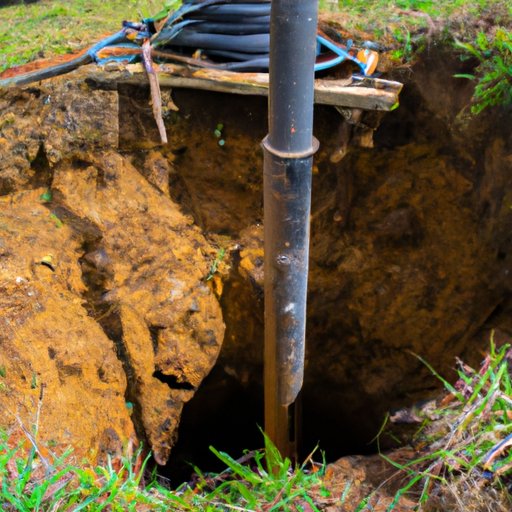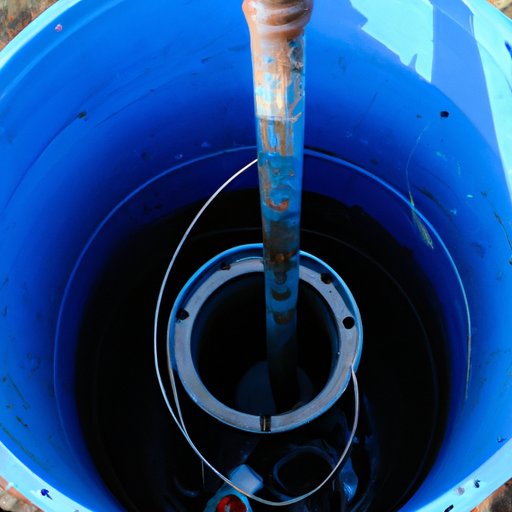Introduction
Having access to reliable sources of clean drinking water is essential for our health and wellbeing. In many parts of the world, wells provide a vital source of fresh water. But what does a well look like and how can you tell if you have one in your yard? This article provides a comprehensive guide to understanding the anatomy of a well and exploring the different types available, as well as advice on locating and installing a well.

A Visual Guide to What a Well Looks Like
A well is an excavation in the ground that’s used to collect underground water. It typically consists of a pipe with a pump or other equipment at the top, surrounded by a concrete or stone wall. Depending on the type of well, it may be covered by a lid or cap. Wells vary in size and depth, but they all serve the same purpose: to provide a reliable source of clean drinking water.
Different Types of Wells
There are several types of wells, including drilled wells, dug wells, and spring-fed wells. Drilled wells are the most common type and are typically made of PVC pipe. They are usually around 6 inches in diameter and can reach depths of up to 400 feet. Dug wells are less common and involve digging a hole in the ground and lining it with rocks or bricks. Spring-fed wells use natural springs as their water source and are usually shallow and easy to maintain.
How to Identify a Well in Your Yard
If you think you may have a well in your yard, there are a few signs to look out for. The most obvious indicator is a visible pipe sticking out of the ground. You may also see a metal cap or lid covering the top of the well. Other signs include a pump house or other structure nearby, or evidence of recent excavation work.

Exploring the Anatomy of a Well
To understand how a well works, it’s important to know the basic components. At the bottom of the well is a screened opening, which allows water to enter the well. Above this is the pump, which is used to draw the water up to the surface. The pipe connecting the pump to the surface is known as the “riser” and is typically made of PVC or steel. On top of the well is the cap or lid, which helps keep dirt and debris out of the well.
The benefits of different types of wells vary, depending on your needs. Drilled wells are typically more expensive to install, but they provide a reliable source of water and can reach greater depths than dug wells. Dug wells are cheaper and easier to install, but they can be prone to contamination from surface water. Spring-fed wells are the simplest and most affordable option, but they may not be able to provide enough water for your needs.

Installing a Well: What You Need to Know
Installing a well is a complex process that should only be undertaken by experienced professionals. The steps involved depend on the type of well you choose, but typically include excavating the site, drilling or digging the hole, installing the pump, and connecting the pipes. It’s important to research local regulations before starting any work, as there may be restrictions on where and how you can install a well.
When choosing a well type, consider your budget, the size of your property, and the amount of water you need. Drilled wells are typically the most expensive option, while dug wells are the cheapest. Spring-fed wells are the simplest and most affordable, but they may not be able to provide enough water for your needs. It’s important to talk to a professional before making any decisions.
Tips for Maintaining a Well
Maintaining a well is essential for ensuring a safe and reliable supply of water. To keep your well in good condition, it’s important to regularly check for signs of wear and tear, such as cracks or rust. You should also inspect the pump and pipes for any damage. Additionally, it’s important to test the water regularly to ensure it meets safety standards.
If you experience any issues with your well, it’s important to seek professional help. Common problems include clogged pipes, broken pumps, and low water pressure. If left unchecked, these issues can cause serious damage to your well, so it’s important to address them promptly.
Conclusion
In summary, a well is an excavation in the ground that’s used to collect underground water. Wells come in various shapes and sizes, and the type you choose will depend on your budget, the size of your property, and the amount of water you need. It’s important to properly identify, install, and maintain a well in order to ensure a safe and reliable supply of water. By following this guide, you can make sure your well is in good working order.
(Note: Is this article not meeting your expectations? Do you have knowledge or insights to share? Unlock new opportunities and expand your reach by joining our authors team. Click Registration to join us and share your expertise with our readers.)
